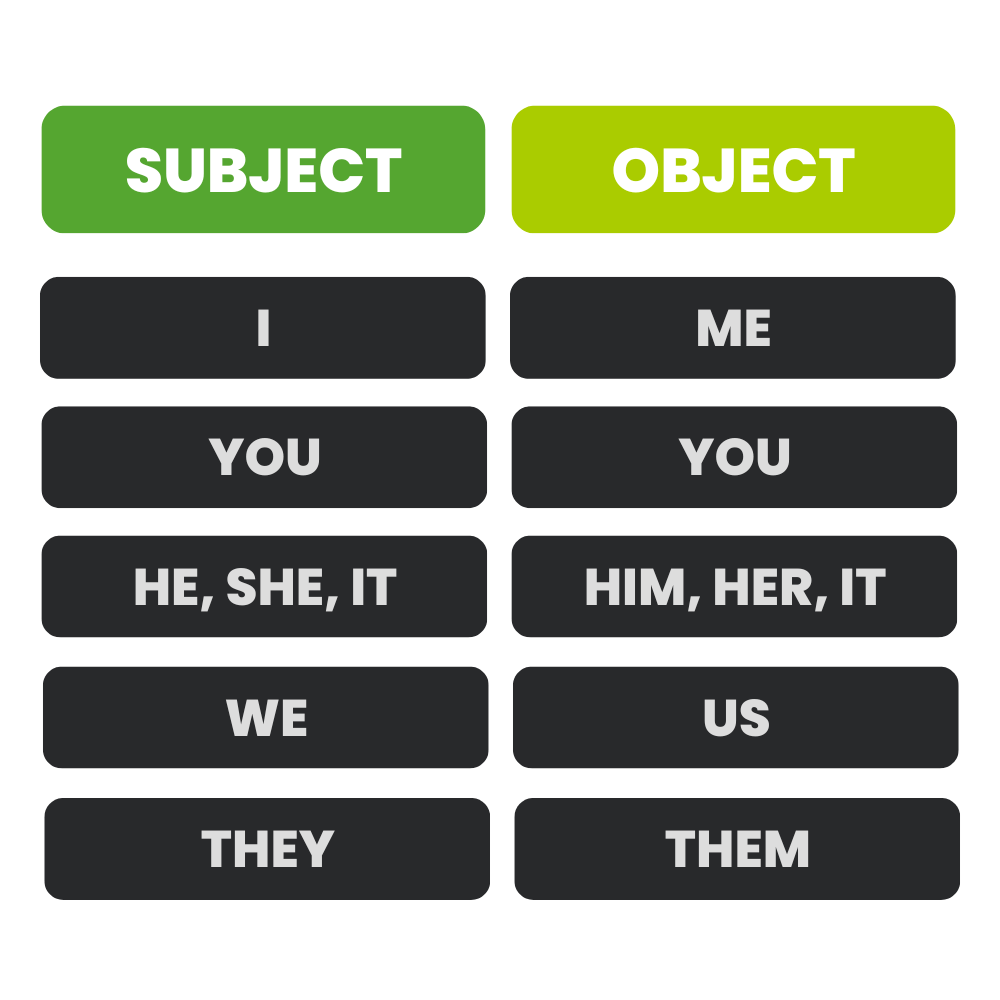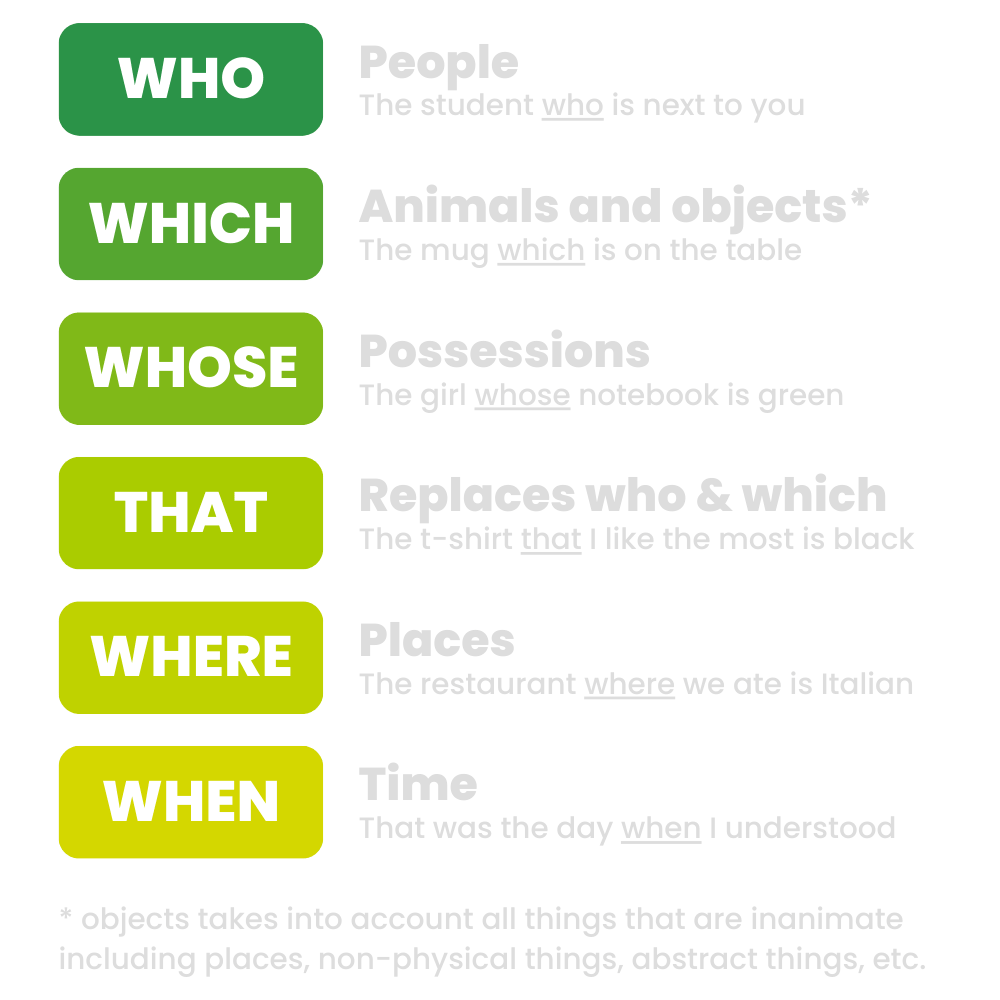⚠️ Some pronouns can easily be confused with determiners.
1 – What is a pronoun
A pronoun is a word that can replace a noun or a nominal group in a sentence. For instance, in the sentence « I love lemons, it is my favorite fruit », the word « it » replaces « lemon ». Pronouns are often used to make sentences less repetitive.
2 – Types of pronouns
A – Personal pronouns
Personnal pronouns can either be subjects or objects. If the pronoun is subject most of the time the pronoun will be doing the action and will be found before a verb. If the pronoun is object it will not be doing the action but will be affected by the verb instead. It will also be after the verb.
Subject
I am cleaning the house
You are running outside
She is eating her lunch
We are in the same class
Object
Someone is annoying me
I can’t believe she did that to her
I have to stop her before
This meal was made just for us

⚠️ « He & him » are used for men, « she and her » are used for women, « it » is used for objects or animals
B – Relative pronouns
What is a relative pronoun?
Relative pronouns are who, which, whose, that, where and when. There are used to introduce a clause which gives more information about a previous reference. The relative pronoun used depends on what is being referred.
Which or than?
That is used when the proposition is essential and cannot be removed. Which is used like that, but cannot be replaced by that if the proposition can be removed, when the information is not necessary.
Which (can be removed)
The teacher did not cancel the class, which upsets me a lot.
That (cannot be removed)
Do you have anything that will help my sore throat?

C – Possessive pronouns
Possessive pronouns express possesion, owernship, origin or relationship. Like every other pronouns they are used to replace a nominal group, do not confuse them with determiners.
mine / yours / his / hers / ours / theirs
This computer on the table is mine
The blue box is yours, the red box is mine
One of the book was his, the other ones were hers
The house at the end of the street is ours
She turned off her phone and asked for theirs
D – Demonstrative pronouns
Demonstrative pronouns are used to point to specific things. Like every other pronouns they are used to replace a nominal group, do not confuse them with determiners.
this / that / these / those
This is my new computer
I don’t know what that is
I need to fix these
I wanted those as well
